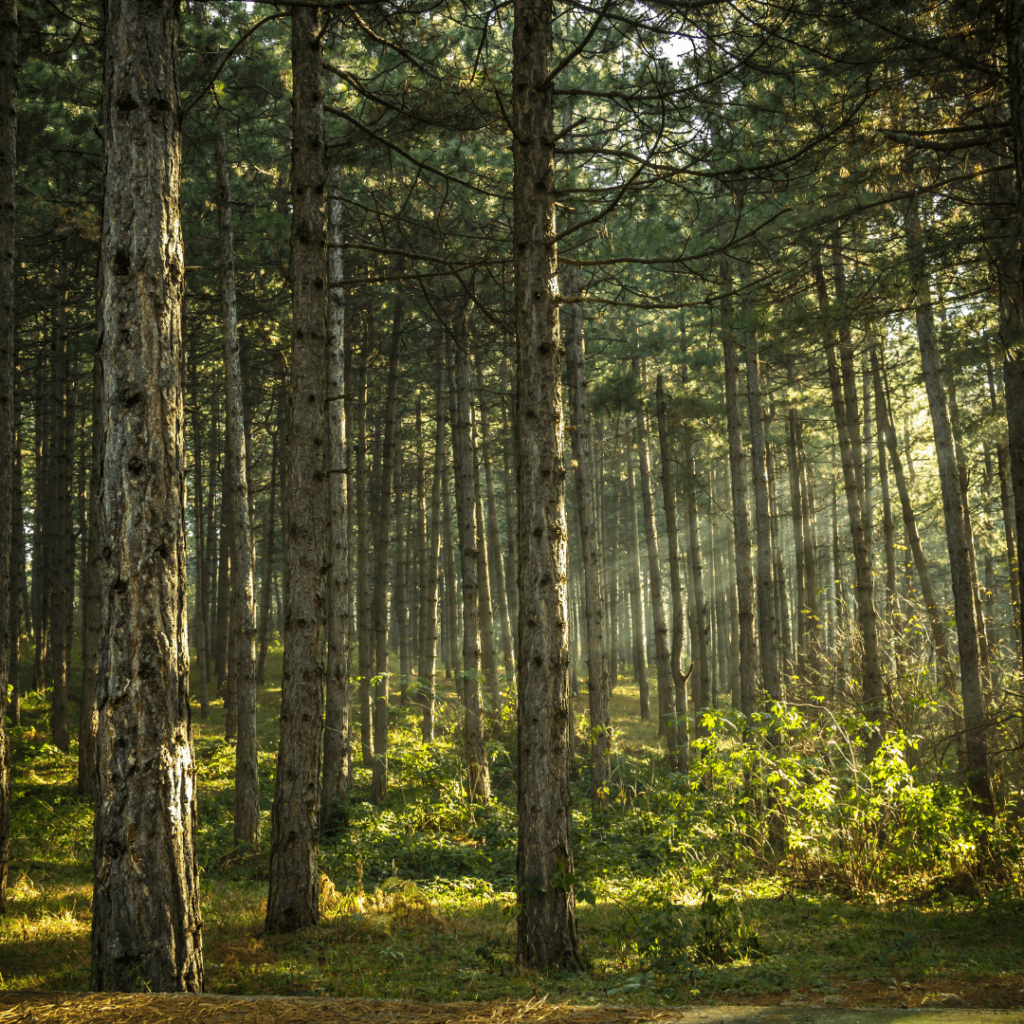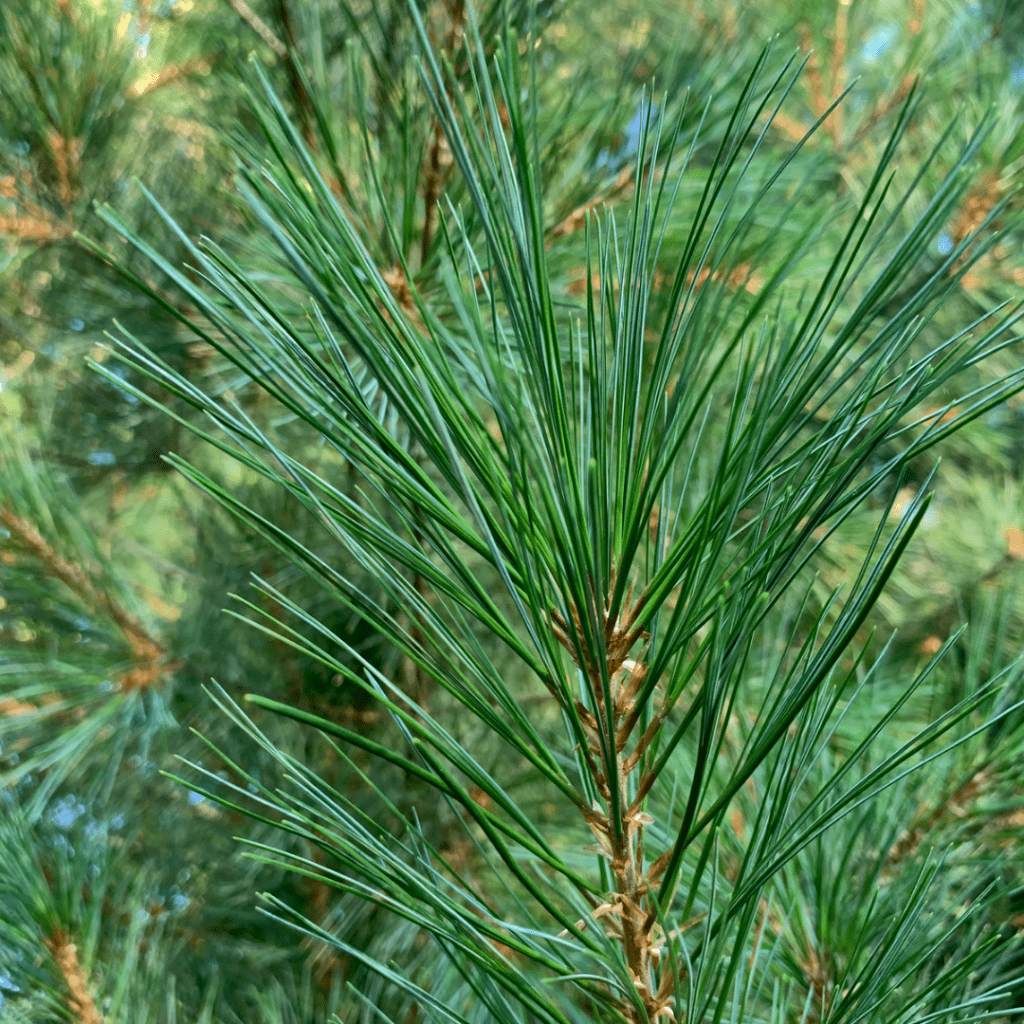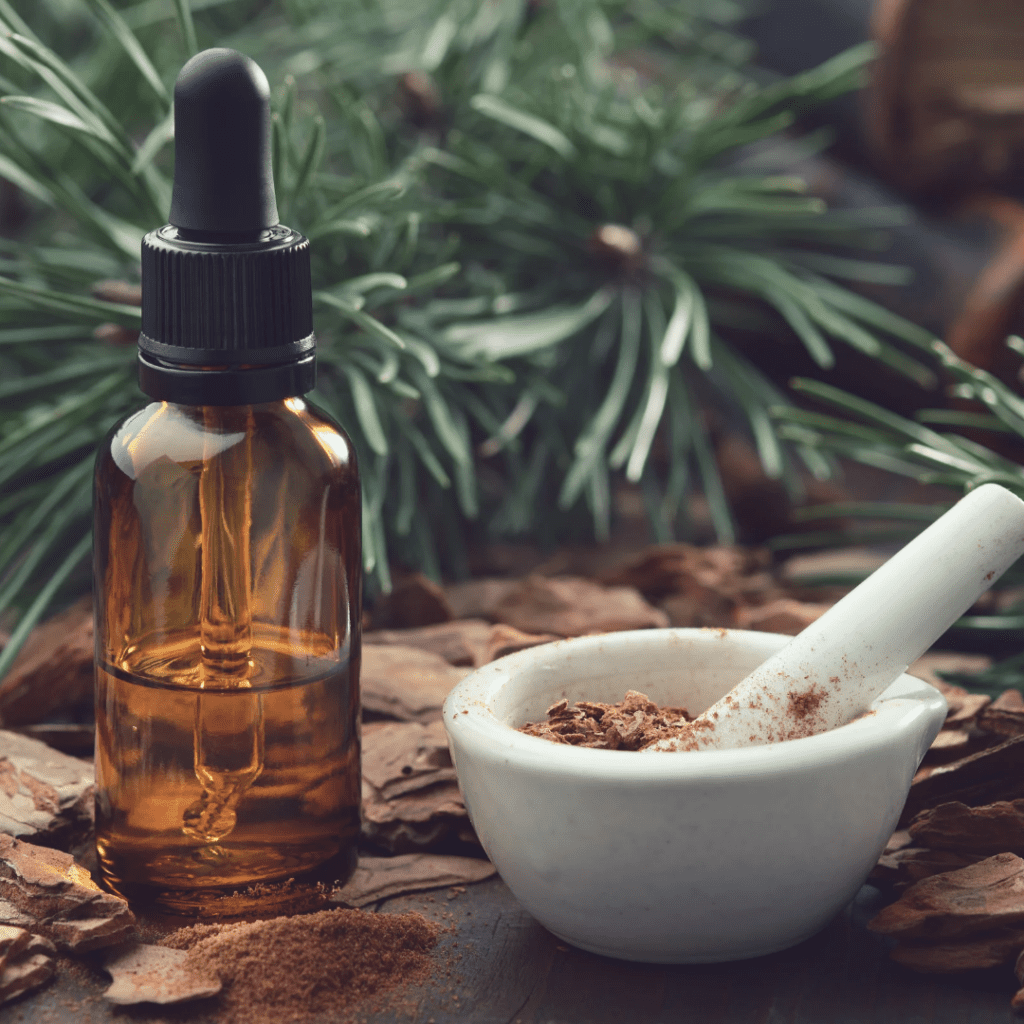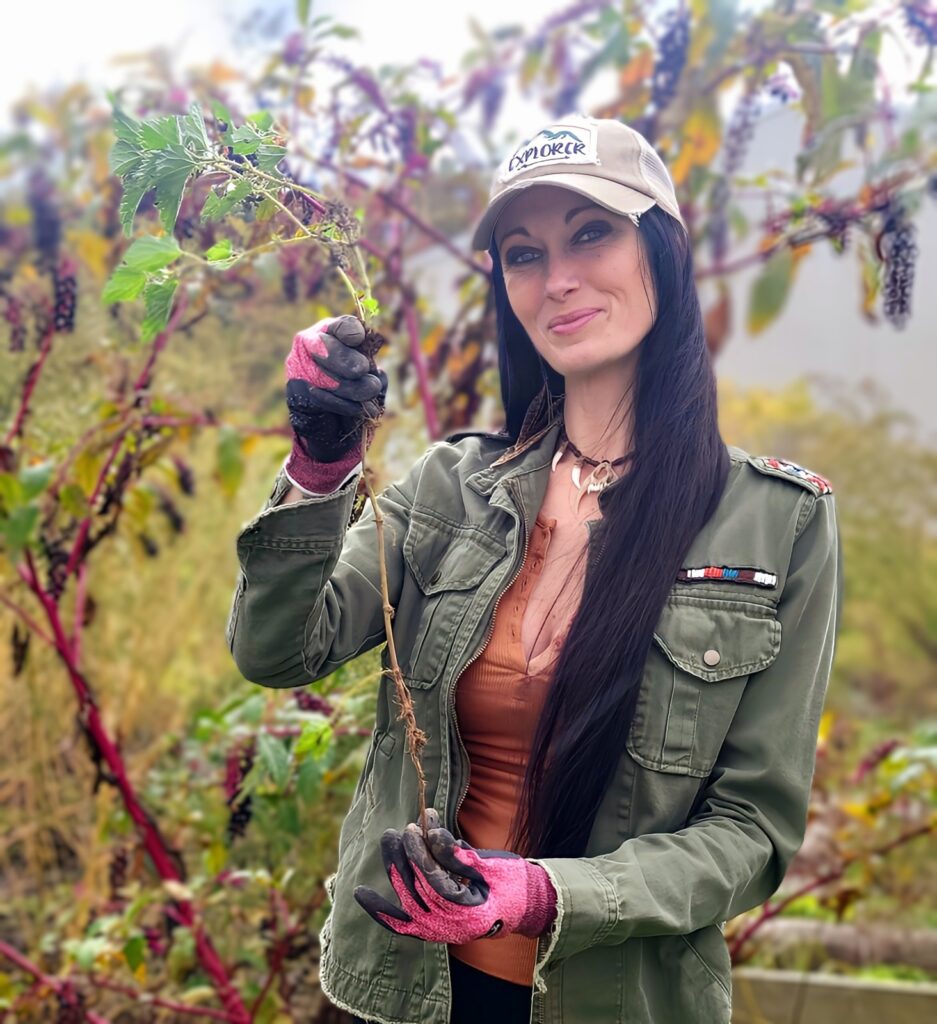White pine (Pinus strobus) is a fast-growing, medium-sized conifer tree with long needles and a very straight trunk, growing up to 100 feet in hight. Native to north-eastern parts of North America, with varieties growing in the mountains of Mexico and Guatemala, white pine became an important resource for many indigenous tribes.
The inner bark was an available food source that was eaten by either boiling it, or grinding it into a powder which acted as a flour alternative. This pine flour was not used in the way we use flour today, to bake breads, cakes, etc. This was added to pots of stew to thicken it and add needed nutrition.
White pine was also used as a material source. Before the arrival of Europeans, many eastern tribes used the huge, straight trunks of white pines for dugout canoes. Pine pitch was also made from the sap and used as a natural glue for stone tools and weapons, such as arrows and knives.

From a spiritual perspective, the white pine tree is a sacred tree. Haudenosaunee (Iroquois) legend says there was a terrible conflict between five different nations of people. This conflict was rooted in cycles of pain, revenge, and chaos. A messenger of peace sent from the Great Spirit, the Peacemaker, sought to unite the five warring tribes. After convincing them to unite, they came together to make peace, but they still carried their weapons. The Peacemaker uprooted a White Pine tree and had them throw all of their weapons into the hole. He then replanted the tree, and the underground waters carried away the weapons.
On the tree, the needles grew in clusters of five, to represent the five nations who came to find peace. The roots of the tree spread out in four directions, to the north, south, east and west; the roots are called the roots of peace. It is from this Native American story that we can understand why the White Pine, Pinus Strobus, is called the Tree of Peace and why the White Pine carries such power here on our landscape.

Identification
White Pine (Pinus strobus)
~5 needles per fascicle
~Long, thin, and flexible needles
~Young trees have smooth, greyish bark which darkens and forms cracks as the tree matures
~Long and thin cones with smooth scales when mature
~Immature cones are light green
~Pale yellow to light brown sap (or resin) with a sweet menthol-like flavor and aroma
Are All Pine Species Edible?
There are numerous pine trees that are not only inedible, but poisonous and should be avoided.
• Monterey Pine (Pinus radiata)
• Lodgepole pine (Pinus contorta)
• Norfolk Island Pine (Araucaria heterophylla)& Yew (Taxus) can look similar to pine but are not a true pine species. All the same, they are toxic and should not be consumed.
• Ponderosa Pine (Pinus ponderosa) also known as Western Yellow Pine

Medicinal Potential
From a medicinal standpoint, white pine has long been used as a traditional medicine by almost all indigenous tribes throughout north america. The needles are best known for treating any upper respiratory infection but have many benefits for overall health.
Expectorant: White pine bark and needles are considered a strong expectorant and tissue stimulant, as it will stimulate the elimination of mucus by increasing oxygenation to depressed, bogged down, mucus entrenched membranes. It also relaxes by soothing, cooling and calming irritated and inflamed sinuses and lungs. In my experience I have found white pine is helpful for both a wet and dry cough.
Vitamin C: Pine needles are well known for being extremely high in Vitamin C. They make a great addition for any tincture or tea for boosting winter immunity. Pine needles are actually 5 times as high as oranges and lemons per volume, in Vitamin C. A deficiency of Vitamin C can negatively impact the adrenal system as well as the integrity of tissues in the body. Incorporating a daily regimen of vitamin C, is one way to improve your overall health.
Antioxidants: White pine is extremely high in antioxidants. Antioxidants are substances that protect your cells against free radicals, which may play a role in heart disease, cancer and other potential disorders.
Shikimic Acid: White pine is also very high in shikimic acid, which has been proven to help stop blood clots from forming, protect people from respiratory infections. It also displays anticancer, antiviral, and antibiotic properties. All great reasons to use as a fall or Winter remedy, when illness and sickness are more prevalent.
Shikimic acid also produces many important amino acids and neurotransmitters that are essential for human health. Pine needle tincture when made with fresh needles, contains shikimic acid, which may help stimulate this pathway and increase production of these substances in the body.
Anti-inflammatory: One 2004 study discovered that pine trees, in particular, the bark contained compounds that reduced inflammation markers in the body. Inflammation is one of the leading factors in many diseases, including headaches and other painful chronic diseases.
The simple addition of a pine needle tincture or tea into your daily routine can help aid the body in cleansing many free radicals and other bacteria that can build up and produce disease.
Mood & Depression: White pine has a long reputation as a mood elevator to help alleviate stress and depression. The pine cone is a prominent symbol that has been used throughout the span of recorded human history to represent enlightenment, the pineal gland and the third eye. There’s a mysterious connection between pine trees, pine cones, the pineal gland, human DNA and light. It’s thought that the compounds in pine trees activate light pathways that contribute to longevity.
A study preformed determined that white pine was a potential natural treatment for anxiety, depression, and dementia. Fresh pine needles retains that anti-depressive potential by its ability to boost respiratory function and oxygenation of the brain and so energize you out of stagnation. An essential oil distilled from its needles is utilised in clinical aromatherapy to treat adrenal fatigue. In classic aromatherapy, pine is availed for its decongesting action and respiratory health benefits. It also improves concentration and mental clarity, as well as stimulate circulation, treat muscle ache and inflammation.

Astringent & Antibacterial: The resin, also called pitch, has many local first-aid uses as an astringent and antimicrobial dressing on wounds and to pull out splinters. Pine resin, in minute quantities, has been used internally as a powerful expectorant but it does have some toxicity, so I recommend sticking to the needles or bark when it comes to internal use. Pine resin salve is also helpful to lessen muscle aches and joint inflammation.

Uses
White Pine Tea: To receive white pine medicinal benefits, a typical herbal tea can be made from the needles. Fresh needles are preferred, but dried can also be used. Add 1-2 teaspoons of pine needles to a cup and add boiling water. Steep 15 minutes then enjoy! Do not boil your needles in the water. The reason you don’t boil the needle tea is because vitamin C is sensitive to heat and may break down into other components, weakening its benefits. It is a good idea to boil the water first, then pour on top of the needles.
Tincture: Tinctures are liquid extracts made from plants. This potent liquid is a higher concentrate than an herbal tea, therefore can be taken in less amounts and not as frequently. If you want to learn to make your own tincture, visit our step-by-step guide here. For those who may be uncomfortable about making their own, or simply dont have access to these trees, we do offer a White Pine Elixir.
Salve: White pine resin and needles can be incorporated into salves (ointments for wounds and skin conditions). Visit How to Make Herbal Salves for DIY instructions.
Bath: White pine can be used as a warming circulatory stimulant. I love making bath salts with white pine for a warming winter bath. Its also for great aches and pains. You can add oil to the bath salts to make it into a salt scrub, which can be very immune-boosting, as it stimulates lymph flow. White pine essential oil can be purchased or make your own herbal infused oil.
Safety Considerations
Most pine and other conifer species can be used interchangeably, with slight variances in energetic qualities or actions. Some examples of other medicinal conifers include Hemlock (Tsuga spp.), Fir (Abies spp.), and Spruce (Picea spp.). All are considered safe to use and, as with pine, all parts can be used medicinally, including the resin. While most conifers are not considered toxic to humans, there are poisonous evergreens that should be avoided. Yew (Taxus spp.) is the most commonly encountered toxic conifer. It has bright red berries and short, wide needles growing along a central stem.
Other toxic conifers are native to the southern hemisphere, sold as potted indoor plants in the US, such as Norfolk Island Pine (Araucaria heterophylla). In general it is best to avoid using indoor conifers as medicine, including Christmas trees and wreaths. These are often heavily sprayed by pesticides so avoid at all cost.
Pine pollen can cause an increase in allergic reactions. Do not use pine needles in pregnancy and avoid the long-term internal use of the bark. Both pine needles and pine bark can cause kidney irritation with long-term use in strong doses or with sensitive individuals. Do not use pine resin internally except in minute doses under the direction of a skilled herbalist. Be sure you have correctly identified pine and not a look-alike.
Never consume a plant you are not 100% positive of its identification. Do not use white pine if you are pregnant or nursing. If you are taking medication, talk to your doctor first before starting any herbal therapies. View our disclaimer here.

Final Thought
I have been using this amazing tree for most of my life. It is one of my go to’s for respiratory infections, for not only myself, but my family. This beautiful traditional medicine is still offering her gifts of health and healing to all those who want to receive.
Stay wild
Sources below
Moerman DE. Native American Ethnobotany. Timber Press; 1998.
Wood M. The Earthwise Herbal: A Complete Guide to Old World Medicinal Plants. North Atlantic Books; 2008.
Bensky D, Clavey S, Stöger E. Chinese Herbal Medicine: Materia Medica. Eastland Press; 2004.
Moore M. Medicinal Plants of the Mountain West. Museum of New Mexico Press; 2003.
Burrows GE, Tyrl RJ. Toxic Plants of North America. Wiley; 2012.

Kayce Heister
Kayce is a Clinical Herbalist, Naturopathic Practitioner (HHP), Active Forager, Wild Food Chef and Mother of three. She has spent the last 20 years practicing herbalism and natural health, and spends most of her time educating others on the amazing potential the natural world can offer.